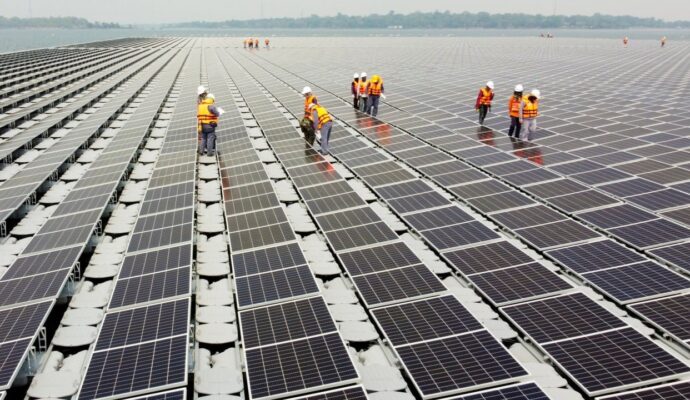The process might be more complicated than scientists had previously thought, a team from the Institute of Geochemistry, Chinese Academy of Sciences, in Guiyang reported in Matter and Radiation at Extremes journal last month.
“The unique mineral was likely produced in the Aristarchus crater, and then ejected northward to the Chang’e 5 sampling site,” said the paper’s lead author Du Wei.
“Our work reminded us that nature often works in a more complicated way than how we simulate it in a lab,” she told the South China Morning Post by phone on Thursday.
Generated under high pressures and temperatures, seifertite is one of the densest and hardest forms of silica found in nature.
Previously seifertite, which has the same chemical composition as quartz, was only found in Martian and lunar meteorites.
It could be synthesised by putting quartz under 100 gigapascals, the pressure 3,400km deep down in Earth’s core, Du said.
Seifertite was discovered in the Chang’e 5 sample in 2022 by Du and her colleagues in Guiyang, a finding that was published in Geophysical Research Letters.
After analysing a 30mg sample distributed by the China National Space Administration, they detected the existence of seifertite and some stishovite – a silicon dioxide form even denser than seifertite.
“We were so surprised that we used multiple methods to confirm that it was seifertite,” Du said.
Scientists are challenged in explaining its existence because while seifertite could have formed during an impact, the collision would also cause high temperatures under which the mineral would become unstable and tend to retrograde to other forms.
Further analysis led the researchers to believe that the formation process on the moon differs to how seifertite is produced in a lab.
In their new paper, Du’s team was focused on analysing the formation process and origin of the seifertite they discovered two years ago.
The moon’s seifertite probably did not come into being directly from its stable, most common form quartz, Du said. Instead, some in-between structures, such as so-called alpha-cristobalite, assisted with the process, she said.
“When the impact happened, only a minimum pressure of 11 gigapascals was required to transform the more common alpha-cristobalite into seifertite,” Du said. “Then, the temperature kept going up and part of the seifertite was turned into stishovite,” she added.
The landing site of Chang’e 5 was dominated by volcanic rocks known as basalts, therefore the rare silica materials were probably not produced locally but instead transferred from nearby areas, she said.
China launches relay satellite to allow communication with far side of the moon
China launches relay satellite to allow communication with far side of the moon
Based on the pressure and timescales needed to create seifertite, the team decided it would have originated from a crater with a diameter between 3km and 32km (1.8-20 miles), depending on the impact angle.
Remote sensing data from previous moon missions pointed to four candidate craters. Among them, Aristarchus is the youngest and therefore the most likely source.
“The crater needs to be very young to avoid being covered later on, for instance by lava,” she said.
Next, Du’s team hopes to focus on basalts to help answer one of the biggest mysteries created by Chang’e 5 samples – why was the moon still active two billion years ago, a time when many believed it had turned cold and dead?
While impact craters shaped the Swiss cheese appearance of the moon we see today, its evolution was largely driven by internal geological processes such as volcanic eruptions, Du said.
“We now know that Changesite-(Y) was formed late during the late stage crystallisation of basalts, and that it’s relatively common in Chang’e 5 samples,” Du said.
Researchers in the US and Europe had been using Chang’e 5 data to simulate the crystallisation of the basalts, Du said.
“I feel so lucky to be part of this generation of Chinese scientists, and be able to study precious moon samples returned by our own country,” Du said. “It’s like witnessing history for me.”
Russia ponders putting nuclear power plant on the moon with China
Russia ponders putting nuclear power plant on the moon with China
“Chang’e 6 may help us understand one of the biggest mysteries – the dichotomy of the moon: why its far side is so different from the near side? We cannot wait to find out the answer,” she said.



